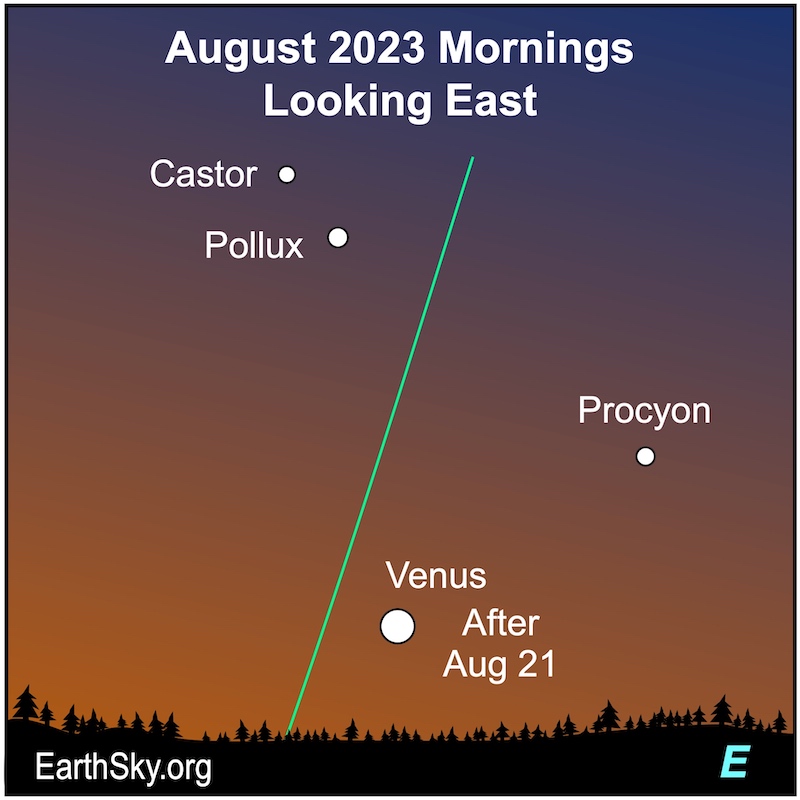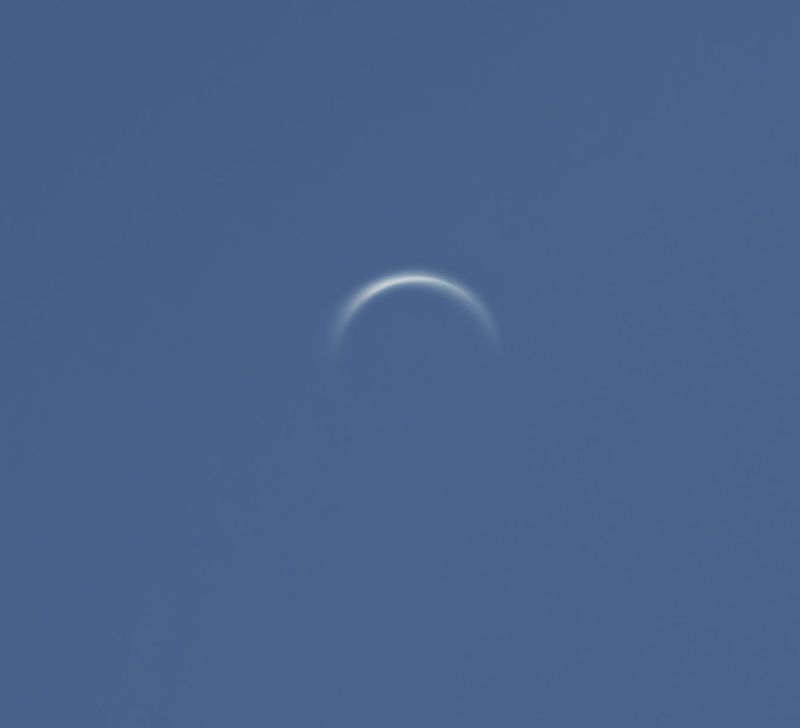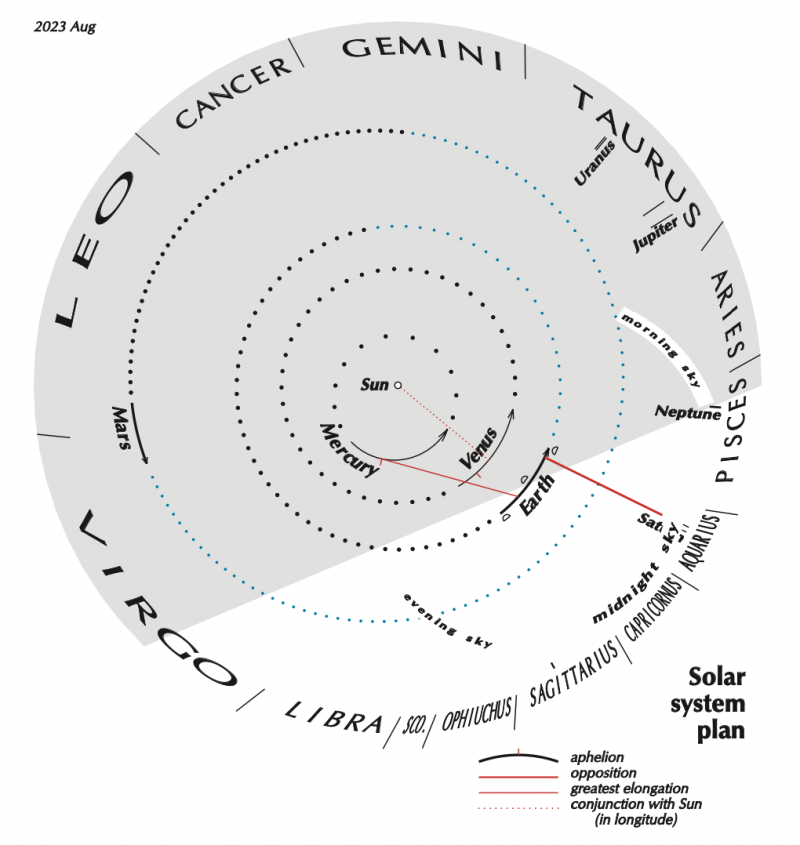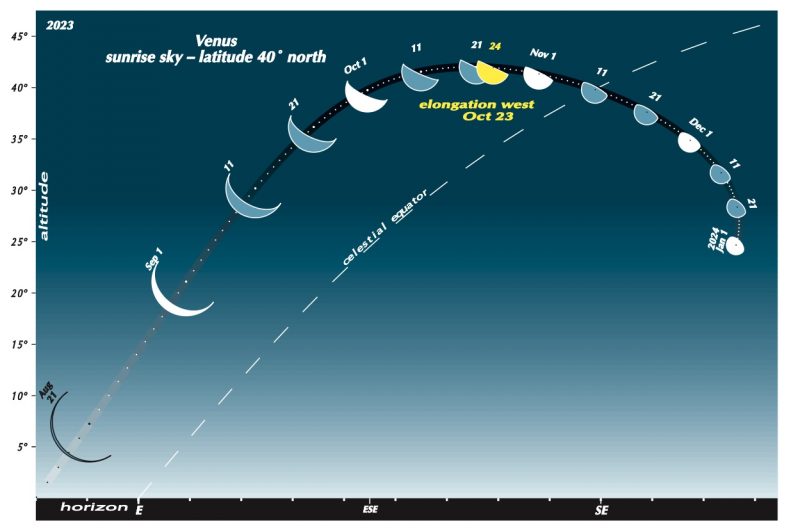[ Skywatchers ] [ Main Menu ]
47597
From: Eve, [DNS_Address]
Subject: Venus, before sunrise, from Taiwan
URL: https://earthsky.org/earthsky-community-photos/entry/60914/?mc_cid=dc61f75e98&mc_eid=96ef794fff
|
We've been watching for Venus to return to the east before dawn. And Meiying Lee in Taipei, Taiwan, captured it on Sunday. She wrote: "Venus is so powerful that I caught it breaking through the eastern clouds 10 minutes before sunrise! After that, I continued to observe it almost half an hour after sunrise ... In the upper right corner of the image is a crescent Venus captured with a 600mm focal length lens." |
47598

From: Eve, [DNS_Address]
Subject: Re: Venus, before sunrise as "morning star' (info)
|
(...felt this transition on Aug. 13th, feeling this still more so as becomes more visible in morning sky. ~Eve) Venus to return as ‘morning star’ late August 2023 Venus as ‘morning star’ For most of 2023, we saw Venus – the brightest planet – in the west after sunset. Many called it the evening star. And, of course, Venus isn’t a star. It’s the next planet inward from Earth. Venus goes between us and the sun about every 19 months. It did that last on August 13, 2023. Now, Venus is about to come back to our sky … this time in the east before dawn. People will call it the morning star. (caption for image: Before August 21, 2023, Venus will lie too close to the sun to see easily. In the last part of August, though, it’ll be rising in the east shortly before sunrise. If you do catch Venus this month, it’ll be a thin crescent in a telescope. In addition, the bright stars Procyon, Castor and Pollux are nearby. Chart via John Jardine Goss/ EarthSky.) It passed between us and sun August 13 The image below is from August 13, 2023 – just a few days ago – when Venus went between us and the sun. That day, it appeared about 7.7 degrees south of the sun in our sky.  Steven Bellavia of Mattituck, New York, captured this image on August 13, 2023, at 3:28 p.m. He wrote: “Venus, 0.9% illuminated, at (or very close to) inferior conjunction.” Where is Venus now? Now, Venus is racing ahead of Earth in its smaller orbit around the sun. So it’s about return to being visible in our sky again. It’ll be back before August comes to an end. But now, we’ll see it on the other side of the sun in our sky – east before sunrise – as the beautiful “morning star.” So Venus might surprise you some late August or early September morning. You’ll look up and notice it – very bright, very low in the east – near the sunrise point. Indeed, it’ll be surprisingly bright for being so low in the sky. Brightest mid-September 2023 The chart below – via Guy Ottewell’s 2023 Astronomical Calendar – shows the phases of Venus for the rest of 2023. It’ll go on to be brightest around mid-September … the “morning star.” Really, though, the planet Venus. An oddly bright beacon in the east in early morning for the rest of 2023. Watch for it.  Heliocentric view of solar system for August 2023. Chart via Guy Ottewell. Used with permission. Venus after sunrise in 2023 the Northern Hemisphere The chart below – via Guy Ottewell’s 2023 Astronomical Calendar – shows the phases of Venus for the rest of 2023. It’ll go on to be brightest around mid-September … the “morning star.” Really, though, the planet Venus. An oddly bright beacon in the east in early morning for the rest of 2023.  Venus’s greatest morning elongation in 2023 from the Northern Hemisphere as viewed through a powerful telescope. Greatest elongation will come on October 23. The planet images are at the 1st, 11th and 21st of each month. Dots show the actual positions of Venus every day. Chart via Guy Ottewell’s 2023 Astronomical Calendar. Bottom line: Venus went between us and the sun on August 13, 2023. Before that, throughout 2023, it had been in the evening sky. People called it the evening star. After about August 21, it’ll return to the east before dawn. Then people will call it the morning star. |
Responses:
[47599]
47599
From: georg, [DNS_Address]
Subject: Re: Venus, before sunrise as "morning star' (info)
| thanks for posting "Solar system plan" |
Responses:
None
[ Skywatchers ] [ Main Menu ]